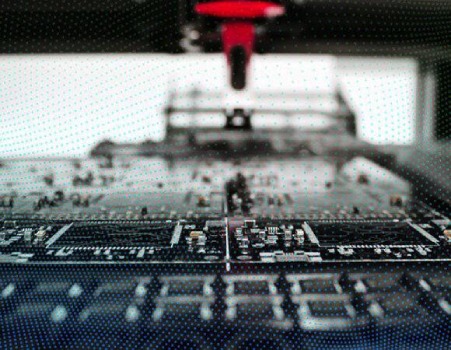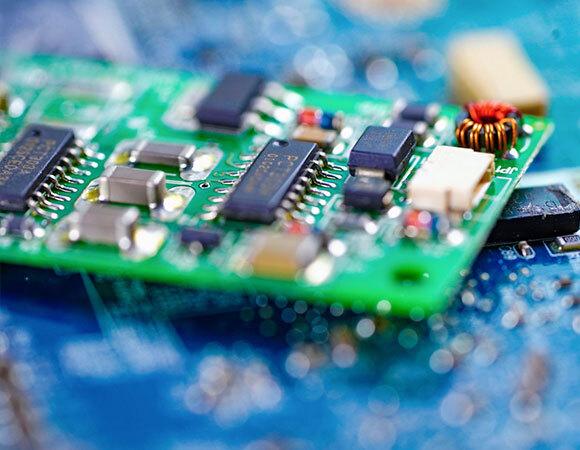 The handover of a fully designed electronics project to the manufacturer tasked with turning that design into reality is one of the most vital parts of the entire process. The best design in the world is going to fail to translate into an effective product if this handover is botched. Get it wrong, and the designer and the manufacturer will end up working with different ideas about how the design should translate into manufacture, and, most importantly, the precise form the finished product should take.
The handover of a fully designed electronics project to the manufacturer tasked with turning that design into reality is one of the most vital parts of the entire process. The best design in the world is going to fail to translate into an effective product if this handover is botched. Get it wrong, and the designer and the manufacturer will end up working with different ideas about how the design should translate into manufacture, and, most importantly, the precise form the finished product should take.
Here at DSL we’re ideally placed to provide advice on the handover process, as we specialise in not just state of the art PCB assembly but also in electronic design engineering. Our in-house team can take anything from an initial and fairly vague idea up to a fully realised concept and turn this into a design tailored to the specific requirements of each client. This, in and of itself, ensures a completely seamless transition from the earliest stages of an initial design up to the finished item rolling off the production line. Thanks to our experience in this field we know exactly what it takes for the handover of a design from one party to another to take place as seamlessly as possible. Perhaps even more importantly, we’re aware of some of the common pitfalls of the process and the fact that, without the handover being handled efficiently, a good design being turned into a product by an expert manufacturer can still fall short of the desired result. While turning the design of your product over to our in-house team will guarantee consistency from start to finish, we’re still more than happy to take on existing designs, and in this blog we’ll outline how the handover process should happen in a best case scenario.
Why the Handover Process is Crucial for Electronics Manufacturing
In some cases – dealing with relatively simple products and smaller production runs – electronic design teams might feel they are able to handle the manufacturing side of the equation in-house. This is often not the case, however, particularly since the majority of the people we manufacture for are looking for efficiencies that will deliver a low unit cost and higher profit margins, and are often hoping to leverage economies of scale through larger production runs. Production on this scale and with this sort of efficiency can very rarely be handled in-house, and that’s when the hand-over process needs to work with optimum efficiency.
The ideal scenario involves the design team having embraced the principle of design for manufacturing (DFM). In simple terms, DFM means that the design of the product or component will be optimised to reduce manufacturing costs. The principles underpinning DFM include the following:
- An initial design which is as simple as possible
- Objects being designed for efficient assembly
- The materials and components used being standardised
- A reduction in the number of parts used and the number of operations and processes needed for assembly
Not all of these will apply to every electronics project – such as a PCB – but the general principles of DFM work across all types of design, and their application will put any project in the best possible position to achieve success after the handover has taken place.
Design for Manufacturing (DFM): Setting the Stage for Success
 The mention of DFM is a reminder that one of the more common handover mistakes is to simply pass a finished design on to a manufacturer without having first undertaken an in-depth DFM review of that design. This review should take place via a partnership between the design team and the manufacturer, during which the parties will establish the parameters of the manufacturing and testing processes, whether, in fact, the manufacturer has the capacity and capability to turn the design into a reality and which production processes will be used. Manufacturers as experienced as the team at DSL – with particular regard to our experience as designers as well as manufacturers – will also utilise this part of the handover process to offer advice around any possible drawbacks of the design and possible alternative solutions. The practical experience of a manufacturer will leave them able to point out that what might look like an effective design decision on paper may not always translate to the production line.
The mention of DFM is a reminder that one of the more common handover mistakes is to simply pass a finished design on to a manufacturer without having first undertaken an in-depth DFM review of that design. This review should take place via a partnership between the design team and the manufacturer, during which the parties will establish the parameters of the manufacturing and testing processes, whether, in fact, the manufacturer has the capacity and capability to turn the design into a reality and which production processes will be used. Manufacturers as experienced as the team at DSL – with particular regard to our experience as designers as well as manufacturers – will also utilise this part of the handover process to offer advice around any possible drawbacks of the design and possible alternative solutions. The practical experience of a manufacturer will leave them able to point out that what might look like an effective design decision on paper may not always translate to the production line.
Avoiding Common Handover Mistakes in Electronics Projects
One of the key parts of any handover process will involve an understanding of the difference between a working prototype which offers proof of concept and a mass produced item. Making sure that the design for a prototype has been successfully worked up into a design for mass production will involve the designers and manufacturers working together to answer the following questions:
- What are the customer use cases – i.e. detailed descriptions of how future customers will interact with the product in order to achieve a specific goal – and is the product as currently designed fit for purpose?
- Which particular production processes will be needed to manufacture the design?
- How will the processes needed to turn the design into a reality impact on the cost, quality and timeframe of any production run?
- What kind of testing will be undertaken?
- How is mistake-proofing embedded in the production processes used by the manufacturer?
There is a chance that the initial design team, lacking the ‘hands-on’ know-how and experience of a manufacturer like DSL, will deliver a design which focuses entirely on the engineering and functional challenges of turning a concept into a prototype, and not the further challenges of delivering that prototype as a mass-produced item. The handover is the period when any tendency of this type can be addressed and the mistakes it leads to ironed out.
From Prototype to Production: Bridging the Gap
One of the most important pieces of advice for any design team looking for a manufacturer to hand a project over to is to look for one ready and willing to put the work into ensuring a DFM review has taken place at the first opportunity. They should also be able to demonstrate a proven history of doing so on previous projects. Alternatively, the design team could opt to ask a third party engineering team to perform the DFM review before handing it over to the manufacturers. In both cases the aim of the exercise will be to spot any issues with the design which might impede a smooth running production process as early as possible, since mistakes or problems spotted once the production run has started will cost much more to correct than those which are dealt with pre-production.
Partnering with the Right Electronic Manufacturer: Key Considerations
In the ideal scenario, a team of designers should look to build an on-going working relationship with the manufacturer of their choice, based on a track record of mutually beneficial project management. With this kind of partnership in place, the manufacturing team will be able to take part in the design process from the earliest development stages. There must be few things more frustrating for a design team than having a solution which they have put time and effort into coming up with dismissed by the manufacturers on the basis of practicality, and having to go back to the drawing board. With a manufacturing team able to provide input from the earliest possible stage, frustrations of this kind can be avoided.
Practical Steps for a Smooth Manufacturing Handover
In addition to the design and manufacturing considerations already set out in this blog, there are practical matters which need to be settled between the parties in order for the handover to take place seamlessly. Many of these might seem to fall under the heading of being too obvious to need pointing out, but a desire to understand and perfect the ‘big picture’ of project delivery can sometimes lead to the smaller details being overlooked. These details will include the following:
- Establishing how the manufacturer will bill for their work. At DSL we offer flexible delivery schedules, which means clients only have to pay for the items they need when they need them, for example, something which is a break from traditional practice.
- What are the terms of engagement, including details of deadlines for various agreed milestones through the project?
- How transparent and reliable is the supply chain upon which the manufacture will rely when delivering the project?
- Does the manufacturer have the agility and flexibility to cope with any supply chain issues without disrupting delivery of the project?
- If the DFM review leads to changes in the design, will the plans be revised by the original design team, or by the manufacturers?
Documentation: The Backbone of a Successful Handover
 There should be an agreement around the documentation that the designers will provide to the manufacturer during handover. This will include a detailed general brief on the design and the product itself, details of how the finished product will be applied (see the customer use cases mentioned above), a detailed bill of materials and a list of any components needed, performance targets which will need to be met before the product can be signed off as successfully completed, and an agreement on the tests which will be applied to the finished production run. Once detailed documentation and information has been supplied the manufacturer, as well as having a clear picture on the agreed parameters of the project, will be able to explain where they have skills, experience or expertise that can fill any gaps in the design teams capabilities. The manufacturer, for example, may have more understanding of how to source any components needed for the most competitive price, having built their own supply chains over time.
There should be an agreement around the documentation that the designers will provide to the manufacturer during handover. This will include a detailed general brief on the design and the product itself, details of how the finished product will be applied (see the customer use cases mentioned above), a detailed bill of materials and a list of any components needed, performance targets which will need to be met before the product can be signed off as successfully completed, and an agreement on the tests which will be applied to the finished production run. Once detailed documentation and information has been supplied the manufacturer, as well as having a clear picture on the agreed parameters of the project, will be able to explain where they have skills, experience or expertise that can fill any gaps in the design teams capabilities. The manufacturer, for example, may have more understanding of how to source any components needed for the most competitive price, having built their own supply chains over time.
Summary: Ensuring a Seamless Manufacturing Transition
The foundation of any seamless manufacturing handover lies in developing a genuine partnership with the manufacturer of your choice. The earlier the manufacturer can become involved in the design process, the more likely it is that the finished design will be fit for purpose and ready to go into production. Embracing the principles of DFM will mean working out from the initial prototype to a practical design for manufacturing, one which is optimised for ease of production and value. Clear and transparent lines of communication and viewing the handover as a process rather than a one-off event, will help to foster a full exchange of all the relevant information and help to ensure that the process runs as smoothly as possible. The more time that everyone takes to review and analyse each detail of the process before pressing ‘go’ on manufacture, the more smoothly everything is likely to go.
Ready to make your electronics project handover seamless and stress-free? Contact DSL today to discover how our expertise in design and manufacturing can turn your ideas into reality.



